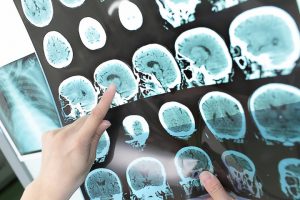
According to a study published in Neurology® Neuroimmunology & Neuroinflammation, an official journal of the American Academy of Neurology, at least 30 minutes of daily summer sun exposure during the first year of life may reduce the risk of relapse in children who are later diagnosed with multiple sclerosis (MS). The study also found that children whose biological mothers were exposed to at least 30 minutes of sunlight daily during the second trimester of pregnancy had a lower risk of MS relapses. The study does not prove that sunlight reduces the risk of relapse in children with MS, but merely shows a correlation.
Sunshine During Childhood and Multiple Sclerosis
“It is important not to spend too much time in the sun without sunscreen, but previous studies have found a link between longer sun exposure and a lower risk of developing MS in childhood,” said Dr. Gina Chang, MPH, of Children’s Hospital of Philadelphia and a member of the American Academy of Neurology. “It is encouraging that our study has shown that greater sun exposure during early development may also help reduce disease activity in children who are later diagnosed with MS.”

For the study, researchers reviewed health records from 18 MS clinics in the United States to identify 334 children and adolescents aged 4 to 21 with childhood MS. Participants were within four years of experiencing their first symptoms. The median follow-up time was 3.3 years. To determine sun exposure, the participants’ parents or guardians completed questionnaires indicating how much time the participant and their biological mother had spent in the sun at different stages of life, what type of clothing they typically wore, and how often they used sunscreen.
Of the total group, 206, or 62%, experienced at least one relapse during the study. Relapses were defined as new or recurring symptoms that lasted at least 24 hours and were at least 30 days apart from the last MS flare-up, without fever or infection. They found that of 75 participants who had 30 minutes to an hour of summer sun daily during their first year of life, 34 children (45%) suffered a relapse. Of the 182 participants who had less than 30 minutes of summer sun per day during their first year of life, 118 children (65%) suffered a relapse.
Limitations of the Study
After adjusting for factors such as season of birth, type of MS medication taken, and use of sun protection such as sunscreen, hats, and clothing, the researchers found that 30 or more minutes of daily summer sun exposure during the first year of life was associated with a 33% lower risk of relapse than less than 30 minutes of daily summer sun exposure. The researchers also examined the sun exposure of the children’s biological mothers. They found that 30 minutes or more of daily sun exposure during the second trimester of pregnancy was associated with a 3% lower risk of relapse for their child with MS.
“Our findings suggest that sun exposure in early childhood may have long-term benefits for the course of childhood MS,” Chang said. “Future studies should examine how time in the sun at other times before and after MS diagnosis affects disease progression to provide better recommendations for sun exposure in children with MS and to help design potential clinical trials.” One limitation of the study was that it relied on participants’ parents or guardians to report sun exposure and sun protection, which they may not have been able to remember accurately. It is important to note that babies should not be exposed to direct sunlight during their first year of life because their skin is very sensitive. The best protection is to keep the baby in the shade and choose light, airy clothing that covers as much skin as possible.


